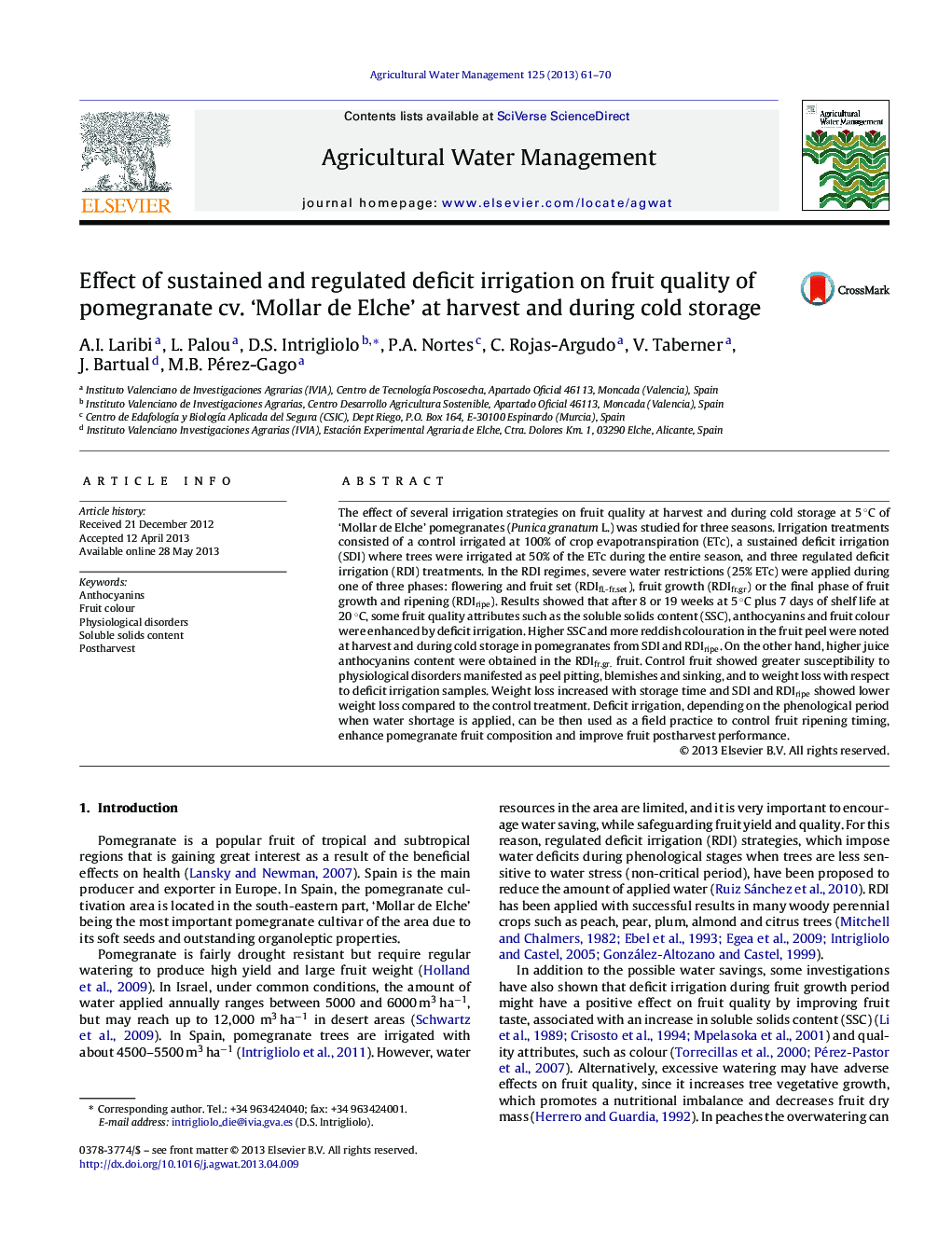| Article ID | Journal | Published Year | Pages | File Type |
|---|---|---|---|---|
| 4478867 | Agricultural Water Management | 2013 | 10 Pages |
•The effects of deficit irrigation on pomegranate fruit composition were evaluated.•Fruit samples were analyzed at harvest and during cold storage.•More reddish fruit colouration was noted when stress was applied during fruit ripening.•Higher juice anthocyanins content was obtained when summer water shortage was applied.•Fruit from well watered trees showed greater susceptibility to physiological disorders.
The effect of several irrigation strategies on fruit quality at harvest and during cold storage at 5 °C of ‘Mollar de Elche’ pomegranates (Punica granatum L.) was studied for three seasons. Irrigation treatments consisted of a control irrigated at 100% of crop evapotranspiration (ETc), a sustained deficit irrigation (SDI) where trees were irrigated at 50% of the ETc during the entire season, and three regulated deficit irrigation (RDI) treatments. In the RDI regimes, severe water restrictions (25% ETc) were applied during one of three phases: flowering and fruit set (RDIfl.-fr.set), fruit growth (RDIfr.gr) or the final phase of fruit growth and ripening (RDIripe). Results showed that after 8 or 19 weeks at 5 °C plus 7 days of shelf life at 20 °C, some fruit quality attributes such as the soluble solids content (SSC), anthocyanins and fruit colour were enhanced by deficit irrigation. Higher SSC and more reddish colouration in the fruit peel were noted at harvest and during cold storage in pomegranates from SDI and RDIripe. On the other hand, higher juice anthocyanins content were obtained in the RDIfr.gr. fruit. Control fruit showed greater susceptibility to physiological disorders manifested as peel pitting, blemishes and sinking, and to weight loss with respect to deficit irrigation samples. Weight loss increased with storage time and SDI and RDIripe showed lower weight loss compared to the control treatment. Deficit irrigation, depending on the phenological period when water shortage is applied, can be then used as a field practice to control fruit ripening timing, enhance pomegranate fruit composition and improve fruit postharvest performance.
